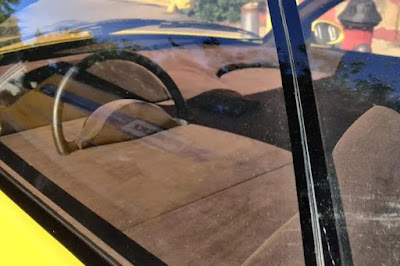Forgotten ONES - The Ford Mustang is an iconic American car that draws its inspiration from the legendary USAAF fighter plane of World War II, reflecting a blend of power, style, and heritage. Initially introduced as a pony car, it quickly evolved into a beloved muscle car, marking its place as a timeless classic in automotive history.
 |
| The Ford Mustang B1 OSI concept paved the way for innovative design and technology integration. (Picture from: Carrozzieri-Italiani) |
Since its debut in 1964, Ford Motor Company has maintained a steady production of the Mustang, spanning six impressive generations. Adorned with the emblematic wild horse logo, the Mustang has become synonymous with durability and has secured its position as the fifth-best selling Ford car, showcasing its enduring popularity and appeal.
 |
| The Ford Mustang B1 OSI debuted at the Turin Auto Show in 1965, followed by the Geneva Motor Show in 1966, and entered production the next year. (Picture from: Coachbuilt) |
 |
| The Ford Mustang B1 OSI debuted at the Turin Auto Show in 1965, followed by the Geneva Motor Show in 1966, and entered production the next year. (Picture from: Classic And Recreation Sportscars) |
Specifically, OSI's partnership with Ford extended beyond the Mustang, leading to the development of other notable projects like the Anglia 105-based Torino and the Ford of Cologne-sponsored 20 MTS coupe. These endeavors showcased Ford's global reach and diverse product offerings, catering to a wide range of automotive enthusiasts worldwide.
 |
| The Ford Mustang B1 OSI featured a modified space-frame chassis and a powerful 289 Hi-Po 4.7-liter OHV V8 engine, delivering an impressive 270 horsepower. (Picture from: Fairytales and Dragons) |
The Mustang's popularity transcended borders, with models like the T5 finding their way into the European market. The introduction of the Mustang B1 OSI, specifically tailored for European competition to compete with brands like Opel GT, underscored Ford's adaptability and strategic foresight in expanding its global footprint.
 |
| Inside the Ford Mustang B1 OSI, luxury intertwined with performance, seen in its mahogany dashboards, three-spoke alloy steering wheel, and premium leather trim. (Picture from: Fairytales and Dragons) |
 |
| Rolling on knock-off Borrani wire wheels and crafted with a glass fiber body, the standout feature of the car was its fold-flat headlight arrangement, reminiscent of the Porsche 928. (Picture from: Fairytales and Dragons) |
Inside the Ford Mustang B1 OSI, luxury seamlessly merged with performance, evident in its mahogany dashboards, three-spoke alloy steering wheel, and premium leather trim. Despite its groundbreaking design, only a single unit of the Mustang B1 OSI was produced, elevating its rarity and desirability among automotive enthusiasts and collectors alike.
 |
| Despite its groundbreaking design, only one unit of the Ford Mustang B1 OSI was produced, enhancing its rarity and appeal to automotive enthusiasts and collectors. (Picture from: Classic And Recreation Sportscars) |
Unfortunately, OSI's journey was short-lived, culminating in its closure in 1968. Nevertheless, its contributions, especially embodied in the Mustang B1 OSI, continue to resonate as a testament to innovation and collaboration within the automotive industry.
Apologies, as this car is rare, we couldn't locate any related videos. Instead, enjoy this video showcasing the Ford of Cologne-sponsored 20 MTS coupe.
 In retrospect, the Ford Mustang B1 OSI serves as a symbol of Ford's ingenuity, technical prowess, and global partnerships, leaving an indelible mark on automotive history and inspiring generations of automotive enthusiasts. *** [EKA | FROM VARIOUS SOURCES | CARROZZIERI-ITALIANI | AUTOMOTIVE TIMELINES | COACHBUILT | CLASSIC AND RECREATION SPORTSCARS | FAIRYTALES AND DRAGONS | PINTEREST ]
In retrospect, the Ford Mustang B1 OSI serves as a symbol of Ford's ingenuity, technical prowess, and global partnerships, leaving an indelible mark on automotive history and inspiring generations of automotive enthusiasts. *** [EKA | FROM VARIOUS SOURCES | CARROZZIERI-ITALIANI | AUTOMOTIVE TIMELINES | COACHBUILT | CLASSIC AND RECREATION SPORTSCARS | FAIRYTALES AND DRAGONS | PINTEREST ]Note: This blog can be accessed via your smart phone.






































